Marshal E.F. Loginova
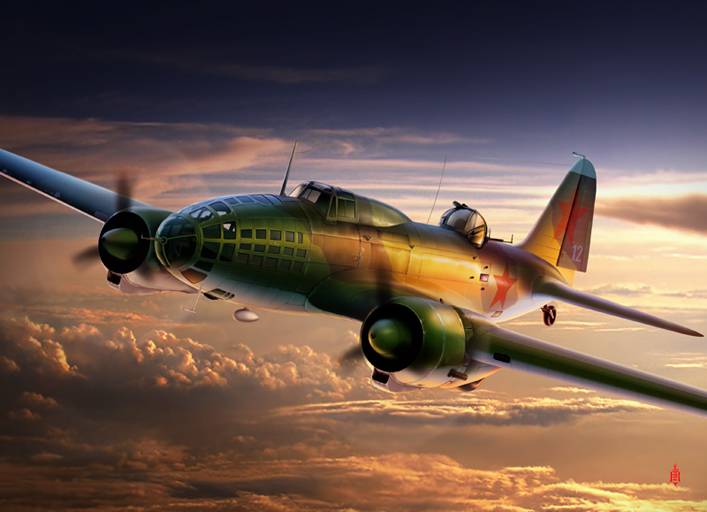
Marshal aviation Evgeny Fedorovich Loginov gave Aeroflot eleven years, and forty-five aviation in total, having gone from a junior military pilot to the Minister of Civil Aviation. He was not nineteen when, in 1926, the son of a bandmaster of a military band and dressmakers accepted pilots at the Leningrad Military Theoretical School. After graduating from the Borisoglebsk school of military pilots, the young aviator began confident movement in command positions in the Air Force units, first near Leningrad, then in the Far East. The senior pilot, flight commander, detachment commander, assistant brigade commander ... Evgeny Loginov met the rank of lieutenant colonel in the war, and ended it as a general. The long-range aviation units led by him (the 17th Air Division and the 2nd Bomber Air Corps) participated in the battles for Moscow and Leningrad, Bryansk, Volgograd, Budapest, Berlin.
After the war, having graduated from the aviation department of the Higher Military Academy of the Armed Forces, E.F. Loginov consistently held the posts of inspector general of the Main Inspectorate of the Ministry of Defense, head of the faculty and deputy of the Red Banner Air Force Academy for educational and scientific work, deputy commander in chief of the Air Force. In 1959, E.F. Loginov is appointed by the head of the Main Directorate of Civil Air Fleet under the Council of Ministers of the USSR, and in 1964, after the transformation of the Main Directorate into the Ministry, as Minister of the Civil Aviation of the USSR Many of the largest transformations in Aeroflot are associated with his name. It was in the sixties that the country significantly expanded its network of air services, international flights gained rapid development, the aircraft fleet was replenished with the latest jet airliners, and the material and technical base of civil aviation was significantly strengthened. His work in Civil Aviation is a special topic worthy of a separate article. In the same speech we will discuss his participation in the Great Patriotic War, on the fronts of which he fought from the summer of 1941 until its end.
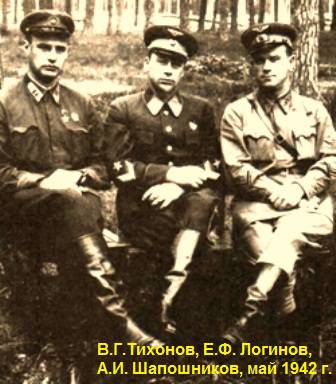
In August 1941, Loginov was appointed commander of the 51st long-range bomber division, which began its combat work in the battle of Moscow. True, in the first front days I had to “work” not in my specialty: the war made significant changes to the use of long-range bomber aircraft. Difficult conditions at the front, the rapid advance of the enemy deep into the country, the heavy losses of front-line aviation forced it to be used mainly for attacks on German tank and mechanized columns. And the further the military actions developed, the greater the need for this was felt.
30 September 1941 of the year, during the implementation of the German operation "Typhoon", the second tank group of General Guderian with all its might hit the troops of the Bryansk Front and put them in a difficult position. One after another, new directions appeared: Mozhaisk, Volokolamsk, Naro-Fominsk, Malo-Yaroslavl, Kaluga, Kalinin ... The headquarters of the Supreme Commander attracted the main long-range aviation forces to help the Bryansk front and the 51 th Specialized Aviation Division. Long-range bombers operated at night, making it possible for our ground forces to gain time to regroup and occupy new defensive lines. However, the situation near Moscow deteriorated disastrously.
Aviation worked with great tension. Loginov showed truly inexhaustible energy in search of opportunities to improve the effectiveness of bomb strikes. First of all, thanks to the crews performing three to five hits on the target, he increased the exposure time to the enemy to 10-15 minutes. Having a certain experience in methodical training of crews, he began to successfully apply tactics specially developed for this purpose. With a strong air defense, the aircraft were usually approached one after the other in such a way that at least three or four were simultaneously above the target, which dispersed the fire of anti-aircraft guns.
Particularly successfully the division acted on the airfield near Orel (the Germans organized here the main base of their air fleet, which operated on the Moscow direction). Only in October, the crews of the division were able to destroy and destroy the 1941 order of enemy aircraft.
Another successful and widely known combat flight was made at an airfield hub in the Orsha region, where the enemy pulled up 150 aircraft for strikes against Soviet troops leading the defenses in the Moscow sector. The goal is tempting, but extremely difficult to fly. Airfields were covered with a huge number of anti-aircraft guns. Enemy fighters constantly patrolled the air. It was hard to hit targets in the dark that were not easy to find during the day, especially under strong enemy fire.
Loginov decided to lead a group of bombers. The Germans met our planes with strong anti-aircraft fire. The sky was littered with flakes from shell explosions. Dotted lines from the tracer bullets of enemy machine guns were moving up from the ground. But Loginov’s crew acted coolly, bravely and decisively. At his command, an anti-aircraft maneuver was skillfully carried out in height and direction, the crew dropped the bomb load onto the aircraft parking lots. This maneuver served as a signal for the actions of the other crews. Lighted targets were hit by the bombers following the leader. As a result, Soviet pilots destroyed up to thirty enemy aircraft.
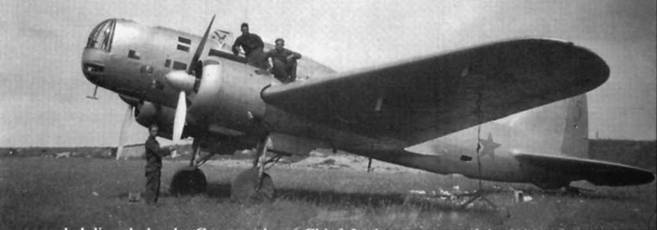
The onset of winter has limited the ability of the enemy to use cars. The main transportation began to be made by rail. The actions of long-range bomber aircraft on railway communications have become particularly important. Already at the end of November, the number of sorties for these purposes increased significantly, and in early December they became the main ones. The railway junctions in Vyazma and Smolensk were subjected to particularly intense bomb strikes. From these raids, German troops suffered heavy losses, while front-line units were deprived of substantial support in replenishing with fresh forces, equipment and ammunition. All of this greatly helped the Red Army offensive, which threw the fascists away from Moscow.
In the composition of long-range aviation.
5 March 1942, the State Committee of the USSR, adopted a resolution on the organization of ADD (Long-Range Aviation). Long-range and heavy bomber aircraft were taken out of the command of the Air Force commander and handed over to the direct command of the Supreme Command Headquarters. The ADD consisted of eight long-range bomber divisions, several airfields equipped with hard-surface landing strips. They transferred them to ADD and 17-th Long-Range Bomber Aviation Division, and Colonel E.F. was appointed its commander. Loginov.
Having received a new appointment, E.F. Loginov continued to improve the tactics of the actions of the bombers, making extensive use of his experience. One of the tasks that bomber had to perform during the war was the destruction of river bridges, which were an important object of transport links. Bomb strikes on bridges had their own peculiarity. The lower the flight altitude above the target, the smaller the dispersion of dropped bombs, the higher the accuracy. However, when bombarded from low altitudes, the fragments and the blast wave from their own bombs created a threat of damage to the aircraft. Therefore, the defense industry has mastered the production of special bridge air bombs MAB-250. They consisted of a 250-kilogram high-explosive aerial bomb, parachuted and equipped with hooks for gearing over trusses of the railway bridge. As a result, the plane before its explosion had time to retire to a safe distance.
Using MAB-250 required a certain technique. It was necessary to work out tactical techniques that ensure access to the target at night and from low altitudes, while simultaneously overcoming the counteraction of all enemy air defense weapons. The ADD command ordered the 17-th Air Division to conduct a training bombardment of a large railway bridge located in the Moscow region. Loginov was actively engaged in the implementation of this responsible task. The bombs, naturally, were dropped without a detonator, and the rest of the situation was created as in combat conditions. To perform the task selected the best crews. The pilots studied the MAB-250 aerial bomb, carefully working out the best options for bombing. Each training flight was analyzed in detail, appropriate adjustments were made. The ADD command summed up the experience of using the MAB-250, the air units were given specific recommendations, as a result of which the crews of long-range bombers successfully destroyed bridges and crossings.
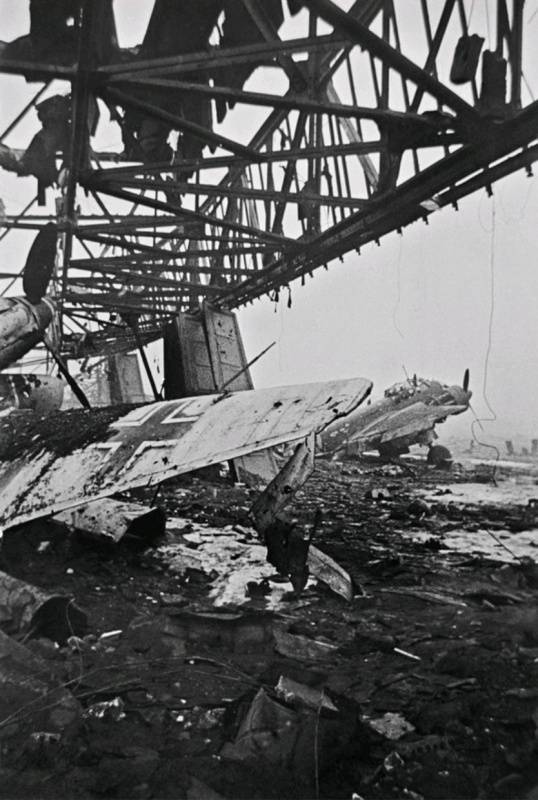
By order of the Headquarters, on the night of May 18, 1942, on the order of seventy airplanes 3 and 17, the air divisions ADD bombarded the rail hubs of Smolensk, Vyazma, Poltava and Kharkov. Powerful massive strikes of ADD inflicted on the enemy's Seshchanskaya air base, where significant forces of the German Luftwaffe were based. Our intelligence officers kept this airbase under constant control, and promptly transferred to the front command information about its activities. In particular, they promptly reported that a large number of enemy aircraft had accumulated at the airfield. On the night of May 30, a powerful bomb strike was inflicted on the airfield Seshch, as a result of which about 80 Nazi bombers were destroyed. By the way, in the multi-part film “Calling Fire on Yourself” a night raid was shown on the enemy airfield and its impressive results: piles of scrap metal from aircraft, destroyed ammunition depots and gas storages. So, the documentary basis of this plot was the actions of our reconnaissance and partisans, as well as the raid of Soviet aircraft on the Seshchanskaya airbase, in which the crews of the 17 th aviation division participated.
Next to death.
Summer 1942 of the year. The fascists, breaking through the front in the area of the bend of the Don, rushed to the Volga. Our troops retreated to the east. The battle at the approaches to Stalingrad turned into the central battle of the Patriotic War. The Supreme Command headquarters sent almost all the aviation reserves at its disposal to the area, trying to free up the best and most efficient aviation units for the battle on the Volga. Among them was the 17-I Aviation Division, Major General Aviation Loginov (this title was assigned to him 6 May 1942 of the year). Three regiments of the division (22, 750 and 751) were constantly in operation. In addition to performing the main task - the actions on the deep rear areas of the Germans, they also struck at front-line targets: clusters of German troops, first of all, crossings of the Don and Silent Pine.
Loginov skillfully led the actions of bomber groups that flew on missions almost round essence. “All of us,” recalled I. Kindyushev, Hero of the Soviet Union, who fought during the war years in the formations commanded by Ye.F. Loginov, - they treated this man with great respect. We respected him for simplicity, attention to people, and most importantly - for organizational skills, the talent of the aviation commander. The need for bombers was huge, and they were not enough. Therefore, each aircraft general sought to use more efficiently. The actions of each crew Loginov took under personal control. And often and personally flew to the area of the bombing.
For some time, the little-known town of Korotoyak became the target of the division’s bombers. In his area at the crossing accumulated a significant amount of enemy troops. To perform the tasks Loginov selected the best crews. And he took part in one of the sorties - he flew to DB-3, which was led by Major Mikhail Urutin. Together with the usual bombs, special devices filled with incendiary ampoules were hung on the outer beams. For the safety of transporting the ampoule was poured with sand, although a certain danger nevertheless remained - one hit of even a fragment of a projectile was enough for ignition. And, nevertheless, loading these incendiary ampoules were at risk, since they had a strong psychological impact on the enemy. When part of the ampoules crashed in the air, a fire avalanche quickly descending to the ground appeared under the bomber, covering a large area.
Flew out at night. Objectives were not difficult to detect: there was burning enemy equipment set on fire during the bombardment. At an altitude of 1400 meters, the crew took up the combat course. Towards our planes the Germans opened heavy fire. Tears of enemy shells now and then ripped the sky. The navigator Major Matsepras dropped the outer suspension. The dark sky was cut by a wide and long strip of bright fire - these are burning ampoules rushing to the ground. Urutin removed the bomber from the shelling zone and turned to re-entry. With a decline, he led the car to the very goal. From a low altitude, it was more convenient for Loginov to conduct an observation in order to evaluate in detail the actions of his crews. However, at this moment the enemy anti-aircraft guns made fire. Urutin attempted to remove DB-3 from the danger zone, but did not have time. One of the shells hit the plane. The bomber turned up his nose, then tilted and began to lose height. The cabin was filled with smoke. Bomber caught fire. In the headphones, Loginov heard the voice of Urutin: “Everybody leave the car!”
Matsepras quickly opened the lower hatch. We must leave the bomber. Loginov fell out of the plane and immediately pulled the parachute exhaust ring. And in time - the margin of height was small. I landed well on the bottom of the ravine. Immediately began to be released from the parachute straps. And then he felt a strong pain in his leg. In exhaustion, lay back. A splinter from a blasted projectile snagged him. Carefully moved the second leg, hands ... It seems to be all right.
With the first rays of the sun, setting an approximate location on the map, set off, to the east. I decided to stay close to the roads, hoping that maybe our retreating troops would be met. But only columns of German tanks and motorized infantry moved. We had to be careful and careful. The slightest mistake could lead to his being discovered. I tried to bypass the busy places so as not to meet the enemy. Oriented by the echoes of artillery fire, wafting from the front line.
Another day passed on the road. The injured leg disturbed. Only on the third day, Loginov went out to Don and swam it with improvised means. Only once on the other shore, he sighed with relief. It seems all the tests behind. But suddenly trouble began. He, who stepped ashore, was detained by fighters from military escort. I tried to convince the fighters that he, a Soviet pilot, was shot down near Korotoyak, but they did not believe it. And the message of Loginov, that he was the commander of the division, was completely considered a conjecture. Fortunately, after arriving at the regimental command post, it did not take time to identify the divisional commander. Here already knew about the downed plane with the general on board. For Loginov quickly sent the aircraft Po-2. Major Urutin, the gunner-radio operator Garankin and the air gunner Sharikov, who left the plane after Loginov, also managed to break through to their own. But the fate of the navigator Matsepras was tragic. Leaving the plane, he opened the parachute prematurely. His lines caught on the tail and the navigator died ...
Berlin, Rzhev, Stalingrad ...
Doctors insisted that Loginov be admitted to the front-line hospital. But he did not stay there for long - he returned to service in two weeks. Pilots and navigators sat down at the hastily knocked down tables in the pine forest. On the trunks of the pines hung cards, charts, tables of calculations. Slightly limping, leaning on a stick, Loginov appeared. All stood up in a friendly welcome commander. And with joy, and with curiosity. If a divisional commander who has not yet fully recovered from his injuries has arrived, it means that important tasks are coming. Loginov, who knew how to appreciate time, immediately got down to business. Slowly and clearly read out the order to inflict massive night strikes on enemy military-industrial facilities and communications located on the maximum radius of action of the IL-4 aircraft. Having finished reading the order, the divisional commander informed that at night on July 19 they were instructed to raid the objects of Königsberg. Flying into the enemy’s deep rear of the enemy required crews to carefully use their fuel. Loginov named the names of the most experienced and skilled crew commanders, who are also able to withstand great tension.
Immediately after the analysis, they began to prepare for flights. A new stage in the activity of the formation commanded by Loginov began - raids on German military-industrial facilities. Among these objects, of course, was Berlin, which, besides the military, was also of great political importance.
On August 27, another raid was scheduled on the German capital. The planes took off at dusk. Walked over the sea to Stettin's traverse. Then sharply turned south. Below floated enemy territory. More than once the fascist searchlights tried to catch our bombers, firing at them and anti-aircraft guns. And here is the capital of the Hitler Reich. From a height, large industrial and military facilities were easily recognized. Bombs flew down. Fire caps of explosions appeared on the ground, flames appeared. Black smoke piled up into the sky.
Return flight passed without incident. Having landed on the airfield, we learned that the German radio broadcast a message that Berlin was bombed by British aircraft. Pilots (and they, due to the specifics of their activity, listened to the air) usually calmly treated such disinformation. But this time they appealed to Pravda with a request to print leaflets stating that it was the Russians who bombed Berlin. And in the next sortie dropped them over the fascist capital. Let the Germans know the truth.
On the difficult days of August, the 1942 of the 17 Air Division had to operate in a westerly direction. At the end of the summer, the troops of the Western and Kalinin Fronts were preparing for the Rzhev-Sychev operation. It was supposed to somewhat ease the difficult situation at Stalingrad — to pull the enemy's forces onto herself, to bind his reserves and to prevent their transfer to the Volga shores. On July 30, units of the Kalininsky Front launched an offensive on a section of the left flank, but they could not break through the powerful enemy defenses and advance. The general offensive was postponed to August 4. It needed active aviation support. The headquarters set the task for the ADD: with massive strikes, to help break through a strongly fortified enemy defense.
Six Air Divisions ADD performed this task. 250 bombers delivered massive strikes against German troops in the Rzhev area. The pilots of the 17 air divisions were heading towards the target in the second wave of our groups. These attacks have provided significant assistance to our troops. After the resumption of offensive operations by the troops of the Western and Kalinin fronts, 20 settlements were liberated by August 610.
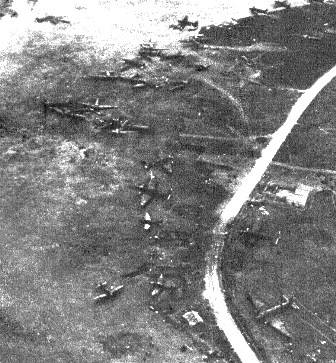
On the night of August 24, ADD aircraft bombed fascist troops in the Stalingrad area, where the situation was extremely complicated. Even the previously planned strikes of some compounds were re-directed from the western directions to Stalingrad. 17-I division of General E.F. Loginova bombed Nazi congregations on the Don crossings in 35-60 kilometers north-west of Stalingrad.
The main objectives of the ADD, according to the rate plan, were the fight against German reserves, the disruption of enemy operational traffic on railways, the destruction of German aircraft on airfields. And, first of all, located outside the radius of action of front-line aviation.
In the early days of the counter-attack, the weather was bad. Aviation was laid up. But as soon as the weather improved, the 17-I division, like all ADD connections, began active operations. Three divisions were aimed at the surrounded grouping. The 17 Aviation Division ADD delivered the main blow to the center. For air strikes every opportunity was used. On the night of January 15, the division bombarded an airfield in the Nursery area, which was actively used by German transport aircraft supplying the surrounded 6 army. From blows of our bombers six transport Ju-52 were set on fire and burned down.
Guardsmen.
In early spring, the 1943, the most distinguished in the fight against the enemy, the units and units of the ADD were given the rank of guards. Among them, and 17-I Air Division, received the name 2-th Guards.
By decision of the GKO from 30 on April 1943, organizational changes were made in ADD. On the basis of eleven individual air divisions formed eight air corps. The purpose of these transformations is to strengthen the power of the bomber formations in the upcoming offensive on the entire Soviet-German front. Lieutenant-General E.F. Loginova became the commander of the 2-th Air Corps.
The baptism of fire 2 th ADD air corps took in the Battle of Kursk. He actively participated in both defensive and offensive battles. Its crews, day and night, bombed the enemy’s defenses, moving enemy forces, and highways, which were used to supply front-line units. At the same time, the corps carried out its main task - it operated at night along the deep German rear lines. The corps made an especially significant contribution to the liberation of Bryansk, for which it received the name: 2 of the Bryansk long-range air corps.
... After the victory at Kursk, Soviet troops launched an offensive to liberate the left-bank Ukraine and Donbass, the western regions of the Russian Federation, the eastern regions of Belarus, and the crossing of the Dnieper. Aviakorpus EF Loginova took part in almost all of these operations, helped our ground troops break open enemy defenses and successfully develop the offensive. In the same period, the corps pilots continued to bomb the enemy’s deep rear.
In the spring of 1944, the regiments and long-range bomber divisions, including the 2-th Bryansk Air Corps, participated in stubborn battles for the Crimea. Its bombers launched air strikes against fortifications, artillery positions, railway junctions, ships and airfields of the enemy, supported the Soviet troops in breaking through the enemy’s deeply echeloned defense forces at Perekop and the Sivash bridgehead in the battles for Sevastopol.
In March-April 1944, simultaneously with participation in the battles for Sevastopol, corps E.F. Loginova began to act in the interests of the troops that launched the offensive to liberate right-bank Ukraine. With blows on railways, bridges, and reserves, they supported the troops of the fronts, ensuring the successful completion of the liberation of right-bank Ukraine.
The liberation of Europe.
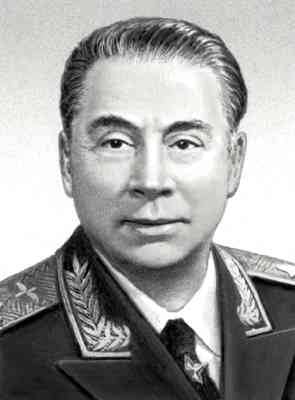
The more vigorously our offensive developed along the entire length of the Soviet-German front, the farther westward the targets for the actions of the EF air corps were moving. Loginov. He took an active part in the Belarusian operation, in the liberation of Minsk and Brest, for which his air units were awarded the names of these cities. Many air corps aviators showed examples of courage and heroism. It is worth noting that Evgeny Fedorovich constantly made sure that these feats of arms were not ignored: whether it was a kind word, gratitude in an order or a presentation for a state award.
Our Army advanced west. Pilots E.F. Loginova distinguished themselves in the battles for the capture of Budapest, Gdansk. The days of the Königsberg assault on April 1945 of the year were memorable. The fascists sought to turn this ancient city-fortress into an impregnable citadel. Powerful walls of buildings and structures, multimeter deep ditches, pillboxes, bunkers and other fortifications contributed to this.
April 7 corps bombers after the front-line aviation struck a powerful massive blow to the defensive points, structures and German troops in the area of Koenigsberg. Carefully thought-out and well-organized actions ensured the success of the task.
The combat path of General E.F. Loginova and his corps in the battles for Berlin. During the war years, all parts of the corps were awarded the rank of guards and awarded orders. And the compound itself was eighteen times different in the orders of the Supreme Commander.
Sources:
Kindyushev, I. I. To the victorious dawn. - M .: Military Publishing, 1978. C. 90-147.
Skripko N.S. For goals near and far. M .: Voenizdat, 1981. C. 170-172, 203-208, 231-244.
Tsykin A. Long-Range Aviation in the Great Patriotic War. // From Ilya Muromets to the rocket carrier: A brief essay stories Long Range Aviation. M .: Voenizdat, 1975. C. 87-132.
Baulin E. Not knowing sleep, not knowing silence. // Civil Aviation. 1995. No.5. C.34-37.
Shishov L., Vorozheikin A. Fly born // Wings of the Motherland: Sat. articles. M .: DOSAAF USSR, 1983. C.132-133.
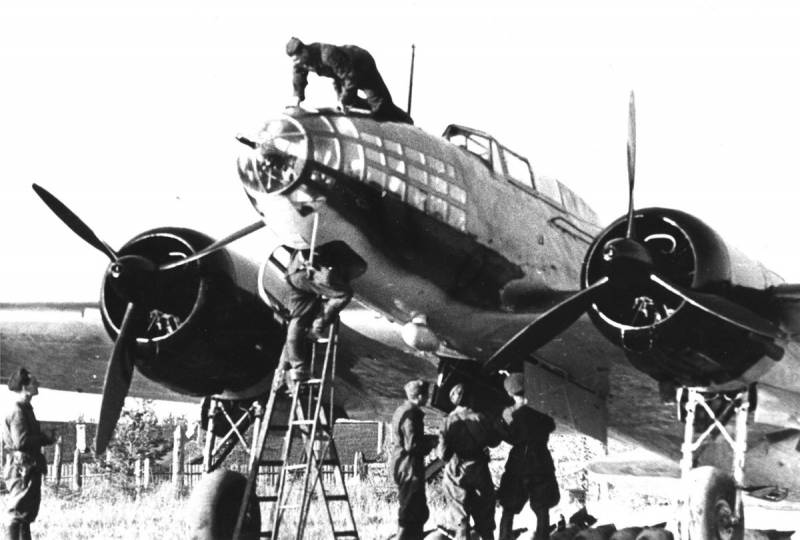
Information